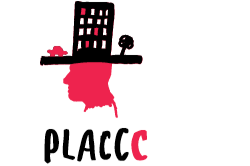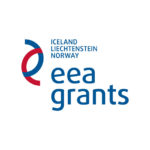Szimpózium program / PICTURE Budapest-Ostfold
|
A PLACCC Fesztivál norvég partnerével, a Scenekunst Østfold-dal közösen, az EGT Alap támogatásával valósítja meg PICTURE Budapest – Østfold c. projektjét, amelynek középpontjában a művészetnek a városi terek újradefiniálásában játszott szerepe áll. /// Scroll down for English /// A két szemináriumból és két workshopból álló PICTURE Budapest – Østfold projekt a köztéri művészeteknek a poszt-indusztriális területek újraértelmezésében játszott szerepét járja körül, hiszen mind a Scenekunst Østfold (a norvégiai Moss és Fredrikstad városában), mind a PLACCC (Csepelen) rendszeresen valósít meg kulturális eseményeket átalakulóban lévő ipari területeken. Az eseménysorozatot 2017. február 15-16-án egy budapesti szimpóziummal kezdődött, amelynek keretében norvég, osztrák és magyar előadókat hívtunk meg. A kétnapos rendezvény első napja a téma elméleti megközelítésére fókuszált, a második napon pedig konkrét példákat, esettanulmányokat hallhatunk. A norvég társadalomkutató Ottar Brox nyitóelőadása a poszt-induszrializálódás jelenségével és az annak hatásaira adott alternatív válaszokkal foglalkozott; Soóki-Tóth Gábor ingatlanberuházási elemző a barnamezők megújulásának lehetőségeit, s e folyamatokban a ’smART city’-koncepció, a közterek és a közösségépítés lehetséges szerepét taglalta; végül pedig Barbara Holub bécsi urbanista a művészet új társadalmi szerepeiről, ezen belül a művész mint várostervező koncepcióról beszélt. A szimpózium második napján Tihanyi Dominika, az Újirány Csoport alapító tagja a köztéri művészet magyarországi helyzetével, annak egy városrész újradefiniálásában játszott lehetséges szerepével foglalkozott, részben saját munkáik példáin keresztül. Míg James Moore, a norvégiai Scenekunst Østfold kurátora az üzleti szférával (mossi kikötő, valamint a fredrikstadi ipari zóna beruházói) való szektorközi kooperáció tapasztalatairól beszélt, addig Maja Pegan, a maribori Hisa! művészeti vezetője egy független kulturális szervezet a helyi önkormányzat és döntéshozókkal való együttműködésről. Február 15. – általános megközelítés 10.00-10:30 regisztráció 10.30-10.45 bevezetés / moderátor: Bujdosó Attila, Kitchen Budapest 10.45-11.45 Barbara Holub (AT): a művészet új társadalmi szerepei, ezen belül a művész mint várostervező 11:45-12.00 kávészünet 12.00-13.00 Soóki-Tóth Gábor (HU): barnamezők megújulásának lehetőségei, a ’smART city’, a közterek és a közösségépítés lehetséges szerepe e folyamatokban 13.00-14.00 ebédszünet 14.00-15.00 épületbejárás: Csepeli Munkásotthon 15.00-16.00 Ottar Brox (NO): a poszt-induszrializálódás jelensége és alternatív megoldások annak hatásaira 16.00-16.15 kávészünet 16.15-17.45 kerekasztal-beszélgetés Február 16. – esettanulmányok 10.00-10:30 regisztráció 10.30-10.45 az előző nap összefoglalása (moderátor: Bujdosó Attila, Kitchen Budapest) 10.45-11.45 Dominika Tihanyi (Újirány Csoport, HU): a köztéri művészet helyzete Magyarországon, lehetséges szerepe egy városrész újradefiniálásában 11.45-12.00 kávészünet 12.00-13.00 James Moore (Scenekunst Ostfold, NO): szektorközi együttműködés a Scenekunst Ostfold és a mossi kikötő, valamint a fredrikstadi ipari zóna beruházói között; 13.00-14.00 ebédszünet 14.00-15.00 épületbejárás: Csepeli Zeneművek bunker 15.00-16.00 Maja Pegan (Hisa!, SLO): független kulturális szervezet együttműködése a helyi önkormányzattal és döntéshozókkal 16.00-16.15 kávészünet 16.15-17.45 kerekasztal-beszélgetés, konklúzió A szimpózium programját mindkét napon csepeli városi séták tették teljessé. A szimpózium helyszíne: Csepeli Munkásotthon, 1215 Budapest Árpád u. 1. A szimpózium nyelve angol! ///in English/// PLACCC Festival, in cooperation with its partner from Norway, Scenekunst Østfold and with the support of EEA Grants will realise the project PICTURE Budapest – Østfold focusing on the possible roles art can play in the redefinition of urban spaces. The basis of the collaboration between the two organisations is the shared intention to explore the possibilities how art in public space (be it performing or visual art, film, installation or urban game) can work in a wider context, how it can make a long-term impact on the environment it has been born. The project PICTURE Budapest – Østfold, composed of 2 international seminars and 2 workshops, investigates the role of art in public space in the reinterpretation of post-industrial districts as both Scenekunst Østfold (in Moss and Fredrikstad in Norway), and PLACCC (in Csepel) regularly organise cultural events in industrial areas in transition. The series of events began with a symposium in Budapest on the 15ht and 16th February 2017. In frame of the event we invited speakers from Norway, Austria, Slovenia and Hungary. The first day of the symposium focused on different theoretical approaches of our subject, on the second day though case-studies, realised examples were presented by the invited speakers. Ottar Brox social scientist from Norway talked about the phenomenon of post-industrialisation and alternative solutions to the effect of this process; Gábor Soóki-Tóth real estate investment analyst from Hungary explored the questions of the revitalisation of brown-field areas, as well as the possible roles of the ’smART city’ concept, public spaces and communities in these processes; Barbara Holub, urbanist and artist from Vienna touched upon the new roles of art in society, especially the concept of artist as city planner. On the second day of the symposium Dominika Tihanyi, one of the founders of Újirány Csoport from Hungary discussed the state of art in public space in Hungary and its possible role in the rehabilitation of an urban environment, partly based in the activity of the group she represents. While James Moore, curator of Scenekunst Østfold talked about the cross-sectoral collaboration of Scenekunst Østfold with Moss Harbour and investors in Fredrikstad industrial zone; Maja Pegan, artistic director of Hisa! from Maribor, Slovenia presented the collaboration between an independent cultural organisation and the local municipality, decision-makers, planning authorities. /// schedule of the symposium /// 15th February – theories 10.00-10.30 registration 10.30-10.45 introduction (moderator: Attila Bujdosó, Kitchen Budapest) 10.45-11.45 Barbara Holub (AT): new roles of art in society, artist as city planner 11.45-12.00 coffee-break 12.00-13.00 Gábor Soóki-Tóth (HU): revitalisation of brown-field areas, possible roles of the ’smART city’ concept, public spaces and communities in these processes 13.00-14.00 lunch-break 14.00-15.00 visit of the Csepel Workers’ House (Csepeli Munkásotthon) and the area 15.00-16.00 Ottar Brox (NO): the phenomenon of post-industrialisation and alternative solutions to the effect of this process 16.00-16.15 coffee-break 16.15-17.45 round table discussion with the participation of the speakers 16th February – practices 10.00-10.30 registration 10.30-10.45 wrap-up of day 1 (moderator: Attila Bujdosó, Kitchen Budapest) 10.45-11.45 Dominika Tihanyi (Újirány Csoport, HU): state of art in public space in Hungary, its possible role in the rehabilitation of an urban environment 11.45-12.00 coffee-break 12.00-13.00 James Moore (Scenekunst Ostfold, NO): cross-sectorial collaboration of Scenekunst Ostfold with Moss Harbour and investors in Fredrikstad industrial zone 13.00-14.00 lunch-break 14.00-15.00 visit of Csepel Music Factory, functioning in a former bunker 15.00-16.00 Maja Pegan (Hisa!, SLO): collaboration between an independent cultural organisation and the local municipality, decision-makers, planning authorities 16.00-16.15 coffee-break 16.15-17.45 round table discussion, conclusion The program of the symposium was completed by short urban walks in Csepel. Location of the symposium: Csepeli Munkásotthon (Csepel Workers’ House), 1215 Budapest Árpád u. 1. /// Támogató / Supported by további támogató / additional support: Építészfórum
|

